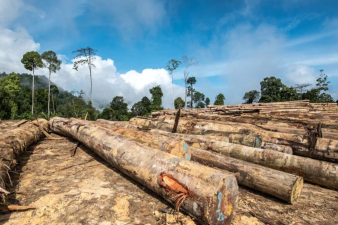The Connection Between Human Survival and the Environment
The natural environment refers to the natural area and conditions in which organisms survive. It is composed of a variety of natural geographical elements, including topography, climate, hydrology, vegetation, soil, and so on. It is a term used in contrast to the human environment. We can view the entire Earth as a natural environment, the foundation for the survival of all living things. The survival and development of all organisms involve the exchange of matter and energy with the natural environment.
In the human-environment system, since the emergence of humans, humans, as the central entity, have evolved from biological humans to primitive humans to social humans. The environment of humans, the central entity, has evolved from natural environments to artificial and natural environments, and then from artificial and social environments. From a historical perspective, the evolution of the human-environment system can be roughly divided into the
following three stages:
- The first stage (3 million years ago).
Humans' ancient ancestor, the dry ape, diverged from the Aegypti ape approximately 27 million years ago, and later gave rise to humans' recent ancestor, the mammoth ape. They were able to walk upright and use natural tools, but were unable to create fully artificial tools. In terms of their relationship with the environment, they shared the same status as other organisms. The environment at this time was a purely natural environment, evolving according to its inherent laws. Based on its relationship with humans, we call this period the "biological-human" stage of human-environment system evolution.
- The Second Stage (3 million to 400,000 years ago).
Beginning approximately 3 million years ago during the Quaternary Pleistocene Ice Age, early humans—ape-men—emerged from ancient apes. In addition to making simple tools and shelter, they also learned to use fire. The use of fire was the first sign of humanity's significant environmental transformation. They worked collectively and shared resources collectively. Through conscious, organized collective labor, parts of the natural environment were transformed into both artificial and natural environments. We call this period the "group-human" stage of human-environment system evolution.
- The Third Stage (approximately 400,000 years ago to the present).
During the Middle Paleolithic Age, humans entered matriarchal society, marking the birth of social beings. Around 40,000 years ago, patriarchal society emerged, giving rise to industries such as agriculture, textiles, and animal husbandry. During this period, not only did the artificial environment further expand and develop, but a social environment of decisive significance to humanity itself also emerged. After the emergence of the social environment, environmental change was artificially intensified. We call this period of the human-environment system the "social man" or "civilized man" stage of environmental evolution.
The following points can be summarized from the evolution of the human-environmental system:
- The natural environment exists for its own sake, the artificial environment exists for its own sake, and the artificial and natural environments coexist. The relationship between humans and the natural environment is more fundamental, but the relationship between humans and the artificial environment is more direct and intimate. The artificial environment must exist within, adapt to, and depend on its own environment.
- The artificial environment does not simply rely on or passively adapt to its own environment; rather, it can continuously transform its own environment into a shared environment, making it more suitable for its own needs. However, this transformation, both in scale and degree, should not disrupt the balance of our own environment.
- The relationship between humans and their own environment cannot be replaced by the emergence of the artificial environment.
- The evolution of the human-environment system is one-way and irreversible. The evolution of environmental systems reveals that the destruction of old equilibria and the establishment of new ones are normal patterns of historical development, and environmental systems are always in a state of dynamic equilibrium. To survive and develop, humans constantly transform nature, disrupting existing equilibria and attempting to establish new ones. However, in this process of transforming nature, humans often fail to achieve the desired results or even achieve the opposite, due to blindness or limitations of scientific and technological advancement. A design can often benefit one area while harming another, or offer short-term benefits but long-term disadvantages.






